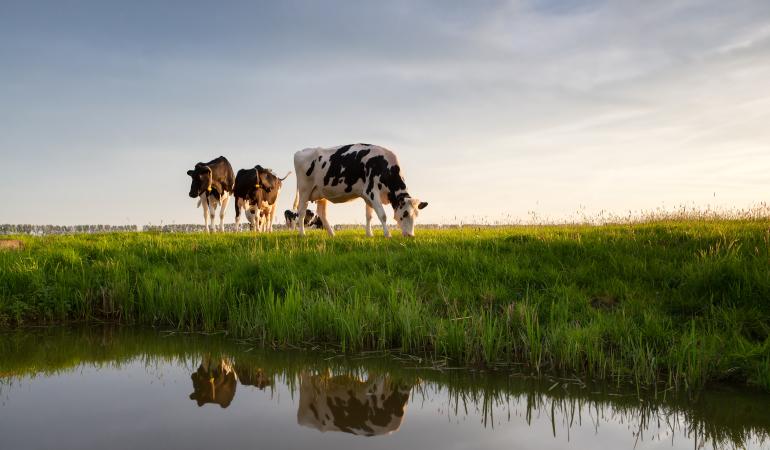
A study conducted at 185 dairy farms found the Campylobacter bacterium at 91% of those farms. Out of the pathogens that were studied, this type of bacteria is the most common in dairy cattle. Campylobacter can cause disease in humans. However, of the participating farmers and family members, only 1 person was a carrier of the bacteria. These findings are part of a multi-year study into pathogens that animals can carry and which can lead to sickness in humans. The diseases caused as a result are referred to as zoonoses.
Pathogens in livestock farming sectors
Every year, RIVM, the Netherlands Food and Consumer Product Safety Authority (NVWA) and Wageningen Food Safety Research investigate how often certain pathogens occur in the various sectors of livestock farming. In 2021, we conducted a study into the manure of cows and calves at 185 Dutch dairy farms. In addition, we examined whether 107 dairy farmers, family members and employees were carriers of the same pathogens. In 2017, we also conducted a study into pathogens in cattle, which specifically looked at beef cattle. The results of the current study are comparable to the results from 2017.
Reducing the risk of infection
Many types of bacteria live in the intestines of animals – including bacteria that can cause illness in humans, such as Campylobacter, Listeria, STEC bacteria and Salmonella – which subsequently also end up in manure. In addition to Campylobacter, the study found Listeria (34%) and STEC bacteria (21%) in the manure. Milk can become contaminated with these bacteria if it comes into contact with manure during milking. People can reduce the likelihood of an infection by not consuming raw milk or raw milk products. Meat can likewise become contaminated during slaughter, which is why it is crucial that consumers fry any beef, and products such as mince, properly in preparation.
Pathogens in faeces or the nose
The researchers looked at whether the same pathogens were present in the faeces or nose of dairy farmers, family members and employees. One participant was carrying Campylobacter, with Listeria being discovered in two participants and STEC in one participant. These pathogens usually cause diarrhoea in humans, but infections can sometimes have more serious effects.
Bacteria and a parasite
This study also looked at ESBL-producing bacteria and MRSA (Methicillin-resistant Staphylococcus aureus), given that key groups of antibiotics are ineffective against them. We found ESBL-producing bacteria at 8% of the farms, as well as in 3 participants, and found MRSA on the skin of 4% of cows as well as in one participant. In addition, we found a number of pathogens – namely the parasite Cryptosporidium and the bacteria Clostridioides and Salmonella – in the animals but not in participants.